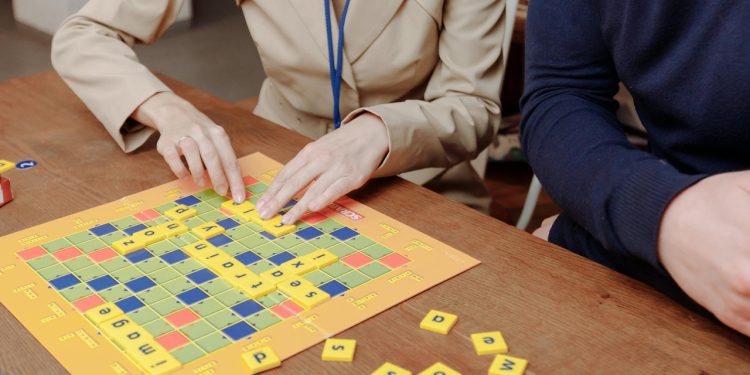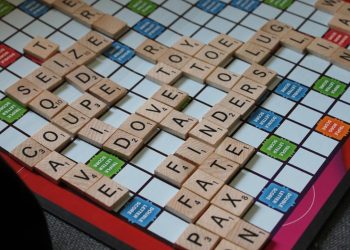Let us start with something pretty basic: Have you ever thought about how specific word puzzles such as Wordle, crossword, or even quiz styles seem to go viral out of nowhere, seemingly becoming the perfect definition of ‘trending’ for a period of time worldwide?
One day, it is a niche game for a few word nerds. The following day, your WhatsApp group is full of colored squares, your Instagram feed is packed with puzzle memes, and your friends can’t get enough bragging about getting their latest 5-letter word victory.
So what could be the reason behind this? Coincidence? Not anymore.
Nowadays, the pattern shifts of word puzzle trends are no longer random occurrences or last-minute snapshots by developers. Machine learning (ML) is now widely used to determine the logarithm behind what people will love to solve next and when will be the perfect time for them.
In this article, we will explain how machine learning manages to not only detect, but engineer the greater spotlight in word games through ML algorithms that advance as they dynamically evolve with the trends. Don’t worry, we promise no complicated words will be used.
First Things First: What Is Machine Learning?
Think about a scenario where you give a child a textbook full of animal images along with a description of their qualities. You explain to them that this is a cat. Then, you point to a four-legged creature with a snout and tell them that this is a dog. Eventually, the student picks up the patterns and is able to identify a range of animals, even ones that they have not seen before.
This is the logic behind machine learning.
It is one of the subdivisions of AI (Artificial Intelligence) which enables computers to “learn” from mountains of data sieved through and start making sound decisions or predictions without being programmed to do so.
With regard to word puzzles, ML models have the capacity to analyze player behavior, language use, social media interaction, and game analysis to see what is currently trending and what is in the process of trending.
Let us now go into more detail.
What Kind of Data Are We Talking About?
To predict trends, machine learning needs data. Lots of it. Here’s where it comes from in the word puzzle world:
1. Player Interaction Data
- How often are people playing certain types of puzzles?
- What words are they solving fastest or struggling with?
- How much time are they spending per game?
2. Search and Social Trends
- What puzzle-related keywords are people searching on Google?
- Which games are being shared most on Twitter, Instagram, or TikTok?
- Are influencers or streamers playing certain games?
3. In-Game Performance
- Which levels or themes have the highest replay rates?
- Where do most users drop off or quit?
- What types of clues or hints get used the most?
4. Linguistic Analysis
- What kinds of words (nouns, verbs, adjectives) are trending in popular culture?
- Are there new slang terms, hashtags, or memes that can be turned into puzzle content?
All of this gets fed into machine learning algorithms, which start recognizing patterns faster and more accurately than any human team could.
Real-World Example: Wordle’s Rise
Let’s take Wordle as a case study.
It seemed like it came out of nowhere. But if we reverse-engineer it with a machine learning mindset, the clues were all there:
- A growing demand for short, daily brain teasers.
- The success of simple, shareable content on social media.
- A cultural push toward nostalgia and wordplay during the pandemic.
ML systems tracking user behavior could have predicted a rise in bite-sized, mobile-friendly, word-based puzzles, just like Wordle.
In fact, many puzzle game platforms now use ML models to test thousands of micro-variations of a game format before launching the best-performing one.
Key Machine Learning Techniques That Predict Puzzle Trends
Okay, now let’s go a bit deeper (don’t worry, still no PhD required).
Here are some of the major ML techniques used to analyze and forecast what’s next in word puzzles:
1. Natural Language Processing (NLP)
This is the secret sauce that helps machines understand human language.
NLP models can:
- Spot trending phrases in real-time.
- Analyze the complexity and structure of words.
- Detect emotional sentiment around word games.
So, if the phrase “90s pop culture” is trending on Twitter, NLP can suggest word puzzles based on Britney Spears songs or movie quotes.
2. Clustering and Pattern Detection
Machine learning models can group users into segments based on their preferences.
For example:
- One cluster might love pop culture references.
- Another might enjoy historical themes.
- A third could prefer vocabulary-based games for exam prep.
By clustering users this way, platforms can serve the right kind of puzzles to the right audiences, improving both engagement and satisfaction.
3. Predictive Analytics
This is where the real forecasting magic happens.
ML models can take all the historical data (from searches, plays, social shares, etc.) and predict which types of puzzles will spike in popularity over the next week or month.
For example:
- If February sees a surge in romantic themes, you can bet “Love Song Lyrics” will trend in puzzles around Valentine’s Day.
- If a new superhero movie drops, ML might predict puzzles involving character names, catchphrases, or superpowers.
Adaptive Puzzle Generation: ML Gets Creative
Machine learning isn’t just predicting what’s trendy, it’s creating puzzles now.
Some advanced ML models, like GPT or other neural networks, can:
- Auto-generate crossword clues.
- Create quiz-style questions.
- Craft anagrams or word jumbles based on a theme.
- Adjust difficulty levels based on the player’s past performance.
This means puzzle developers can scale content creation at lightning speed while keeping it personalized and fun.
And players get fresh, relevant content every day.
Why This Matters: The Future of Word Games
We’re entering a new era where your puzzle game doesn’t just exist, it evolves with you.
Thanks to machine learning:
- Your favorite games can adapt to your tastes in real-time.
- New puzzle formats can be tested and optimized faster than ever.
- Trends can be predicted weeks in advance, keeping games relevant and exciting.
It’s not just about letters and clues anymore. It’s about experiences, customized, addictive, and always ahead of the curve.
How Puzzle Platforms Benefit From ML
Let’s flip the script and look at this from a game developer’s point of view.
Here’s how ML helps platforms like Puzzle Jam:
- Higher Engagement: Personalized puzzles keep users playing longer.
- Better Retention: ML can predict when players are about to churn and introduce new challenges or rewards.
- Content Efficiency: No more guesswork. ML tells devs exactly what themes and formats to build.
- Viral Potential: Predicting the next trending puzzle can help launch the next viral game.
In short, machine learning gives puzzle platforms a serious edge in an industry where attention spans are shrinking and competition is fierce.
The Human Element Still Matters
Even with all the tech, remember this: puzzles are about people.
Machine learning helps analyze and predict behavior, but creativity still comes from humans, designers, writers, artists, who bring puzzles to life with charm and personality.
The future of word games will be a beautiful blend of human creativity and machine intelligence. And we’re just getting started.
So… What’s Your Next Puzzle?
If all this talk of ML and word games has you itching to play, you don’t have to look far.
Try Puzzle Jam , the ultimate quiz game designed to adapt to your mood and challenge your brain.
With constantly updated content, smart difficulty levels, and trending themes based on real-time data, Puzzle Jam is your new go-to for fun, fast, and satisfying puzzles.
Whether you’re into general knowledge, movies, pop culture, or straight-up wordplay, Puzzle Jam’s got something for everyone.
Ready to join the trend and test your brain? Try Puzzle Jam now!














